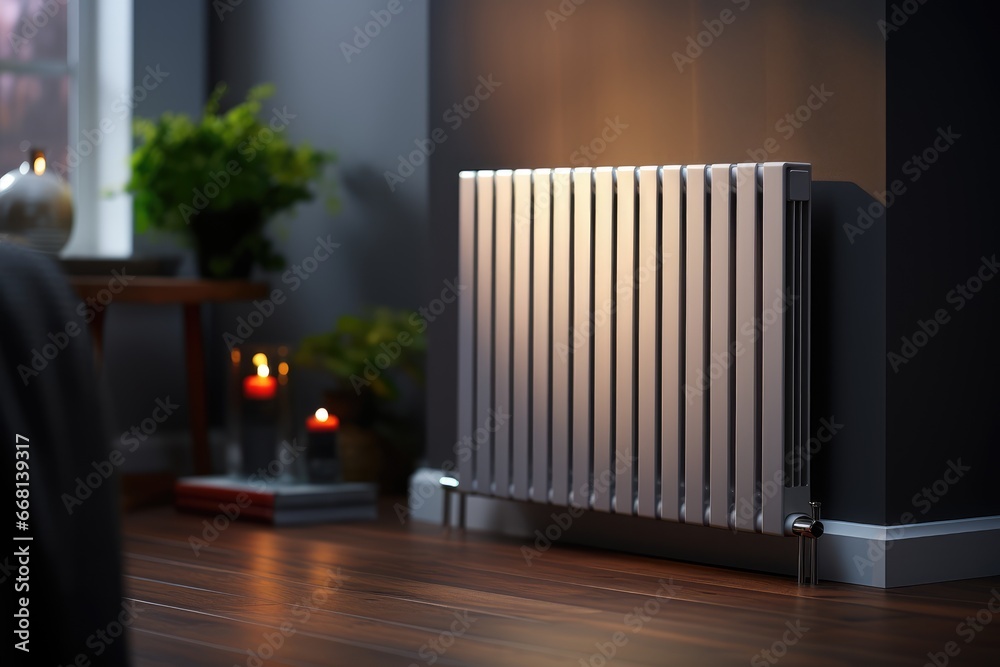Understanding the different parts of a steam radiator is basic for guaranteeing its legitimate upkeep and productive usefulness. Steam radiators, a longstanding apparatus in warming frameworks, have been instrumental in giving warmth and solace to various homes and designs for quite a long time.
This aticle explains parts of a steam radiator, portraying their jobs and featuring their importance in warming frameworks.
Parts of a Steam Radiator:
Steam radiators represent heating apparatuses utilizing steam to disseminate warmth within enclosed spaces. Their verifiable genealogy follows back to the nineteenth 100 years, where they led a change in perspective in indoor warming philosophies. At first saw as awkward and tastefully unpleasing, steam radiators have gone through developmental changes, transforming into sleeker, all the more functionally proficient units over the long run.
The Radiator Body:
Central to the functionality of every steam radiator is its radiator body, tasked with transferring heat from steam to ambient air. Radiator bodies manifest in a plethora of configurations and dimensions, ranging from traditional cast iron constructs to contemporary, streamlined models. The choice of materials employed in crafting the radiator body significantly influences its efficacy and durability, with cast iron being a prevalent option esteemed for its heat-retaining attributes.
Valves and Vents:
Integral to regulating steam and air flow within the radiator are valves and vents. Valves modulate the influx of steam into the radiator, affording users the ability to calibrate temperatures according to their comfort preferences. Vents, conversely, expel surplus air from the system, ensuring unimpeded steam circulation and preempting pressure accumulation.
Also Read: Braeburn AC Not Cooling: Power Through with Solutions

Pipes and Fittings:
Facilitating the integration of the steam radiator with the central heating system are pipes and fittings. These components facilitate the conveyance of steam from the boiler to the radiator and vice versa. Typically crafted from materials such as copper, steel, or brass, pipes and fittings are selected for their robustness and resistance to corrosion.
Thermostatic Controls:
Contemporary steam radiators often incorporate thermostatic controls, empowering users to establish and sustain precise temperatures within their living or working environs. These controls harness sensors to monitor ambient temperatures and modulate steam flow correspondingly, furnishing a nuanced and energy-efficient heating solution.
Safety Features:
The safety integrity of steam radiators is paramount. Pressure alleviation valves are introduced to prevent exorbitant tension development inside the framework, moderating the gamble of breaks or horrendous cracks. Also, programmed closure components deactivate the radiator in case of functional abnormalities, defending tenants and property.
Upkeep and Investigating:
Crucial to drawing out the functional life span of a steam radiator and deflecting exorbitant fixes is persistent upkeep. Routine tasks such as cleansing, lubricating movable components, and scrutinizing for leaks should be diligently executed to preserve system functionality. When malfunctions arise, troubleshooting methodologies like detecting blockages or air pockets often suffice in rectifying common issues.
Energy Efficiency:
Efficiency constitutes a pivotal facet of any heating system, and steam radiators are no exception. Insulating pipes and radiator bodies can mitigate heat dissipation and bolster overall efficiency. Moreover, upgrading to contemporary, energy-efficient models or integrating smart heating controls can further curtail energy consumption and utility expenditures.
Environmental Impact:
Relative to alternative heating modalities, steam radiators yield a modest environmental footprint, particularly when powered by clean energy sources like natural gas or electricity. Nonetheless, avenues for enhancement persist, and eco-conscious enhancements such as solar-powered heating systems or biomass boilers hold promise in reducing carbon emissions and ecological footprints.
Cost Considerations:
The expenditure associated with installing and maintaining a steam radiator system is contingent upon various variables, encompassing spatial dimensions, radiator typology, and installation intricacies. Although steam radiators may entail higher upfront investments vis-à-vis alternative heating alternatives, their protracted operational efficiency and durability engender substantial long-term savings.
Modern Innovations:
Technological advancements have engendered innovations in steam radiator design and functionality. From diminutive, space-saving iterations to Wi-Fi-enabled intelligent thermostats, an expansive array of customization options is now available for optimizing and tailoring steam radiator systems to contemporary living requisites.

Applications and Use Cases:
Steam radiators epitomize versatile heating solutions, adeptly suited for residential and commercial applications alike. They excel in contexts where conventional forced-air systems may prove impractical or inefficacious, such as antiquated residences equipped with extant radiator infrastructures or edifices boasting distinctive architectural features.
Future Outlook:
As the demand for energy-efficient heating solutions burgeons, the outlook for steam radiators appears sanguine. Anticipated advancements in materials, controls, and renewable energy assimilation are poised to augment the efficacy and sustainability of steam radiator systems, ensuring their salience within the evolving milieu of indoor heating.
Conclusion:
In summation, steam radiators persist as steadfast and efficacious heating alternatives for domiciles, enterprises, and institutions globally. By acquainting themselves with the manifold constituents comprising a steam radiator system, stakeholders can ensure judicious installation, upkeep, and operation, thereby optimizing both comfort and efficiency.
FAQs:
Are steam radiators still pertinent in contemporary heating paradigms?
Yes, steam radiators endure as a favored choice for heating, owing to their reliability and efficiency.
Do steam radiators need extensive maintenance?
Whilst periodic maintenance is imperative, steam radiators entail relatively little upkeep compared to alternative heating systems.
Can steam radiators be retrofitted with modern controls?
Indeed, myriad steam radiators can be retrofitted with thermostatic controls and other contemporary features to augment functionality.
Are steam radiators energy-efficient?
With adequate insulation and contemporary enhancements, steam radiators can experience considerable energy efficiency, translating into accrued cost savings over time.






